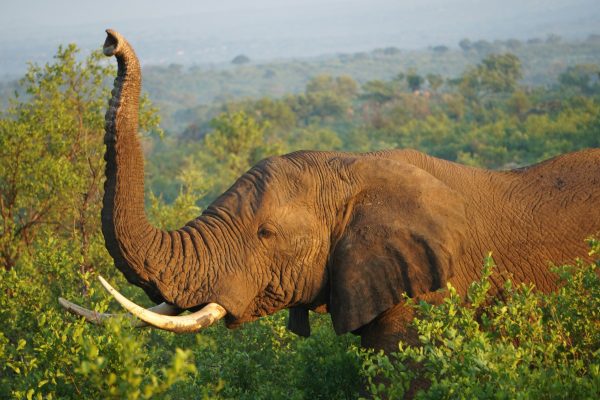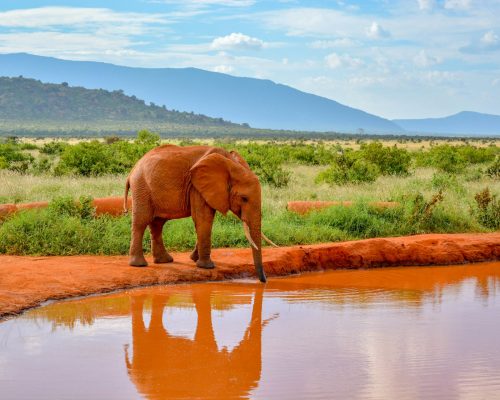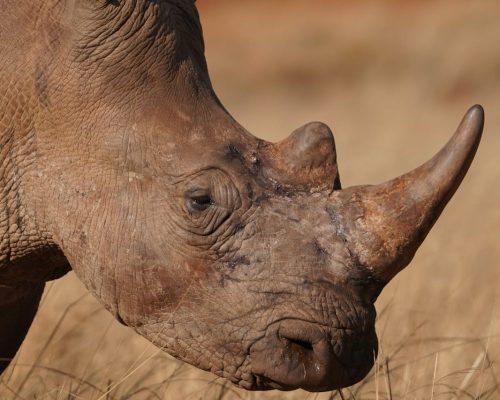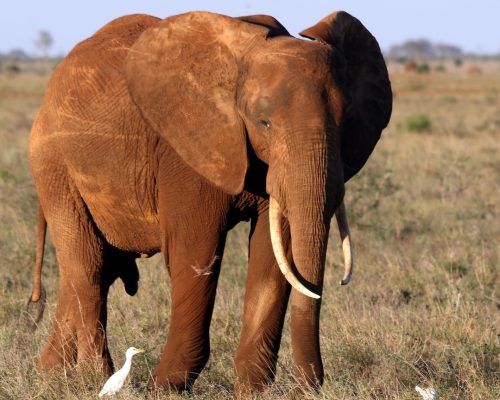Tsavo East National Park
Tsavo East National Park, located in southeastern Kenya, is one of the country’s largest and most iconic protected areas. Covering an expansive area of approximately 13,747 square kilometers, it forms part of the greater Tsavo Conservation Area, which includes Tsavo West National Park. Together, these parks make up one of the largest wildlife sanctuaries in the world. Tsavo East is renowned for its vast landscapes, diverse ecosystems, and rich wildlife, making it a must-visit destination for nature enthusiasts and safari-goers.
Landscape and Geography
Tsavo East is characterized by its dramatic and varied terrain. The park features open savannahs, semi-arid plains, rocky outcrops, and the meandering Galana River, which serves as a lifeline for the park’s flora and fauna. The Yatta Plateau, one of the park’s most notable landmarks, is the world’s longest lava flow, stretching over 290 kilometers. The Lugard Falls, a series of white-water rapids on the Galana River, and the Aruba Dam, a man-made reservoir that attracts wildlife, are other key highlights.
Wildlife
Tsavo East is home to an incredible array of wildlife, making it a prime destination for game viewing. The park is famous for its large herds of elephants, often covered in red dust from the park’s soil, giving them a distinctive reddish appearance. Other commonly spotted animals include lions, leopards, buffaloes, giraffes, zebras, and various antelope species such as impalas, kudus, and gerenuks. The park is also a haven for birdwatchers, with over 500 bird species recorded, including ostriches, eagles, and the colorful Somali ostrich.
Conservation and Challenges
Tsavo East plays a critical role in wildlife conservation, particularly for endangered species like the black rhino, which is protected within the park’s fenced sanctuaries. However, the park faces challenges such as poaching, human-wildlife conflict, and habitat degradation due to climate change and human encroachment. Conservation efforts led by the Kenya Wildlife Service (KWS) and various NGOs aim to address these issues and ensure the park’s ecosystems remain intact for future generations.
Tourism and Activities
Tsavo East offers a range of activities for visitors, including game drives, guided walks, and birdwatching. The park’s vastness and relatively low tourist traffic compared to other Kenyan parks provide a sense of solitude and an authentic wilderness experience. Popular spots like Mudanda Rock, a natural water catchment area, and the Galana River offer excellent opportunities for wildlife viewing and photography.
Cultural Significance
The park is also steeped in history and culture. The name “Tsavo” is derived from the local Kamba language, meaning “slaughter,” a reference to the historic tribal conflicts in the area. The park’s history is also intertwined with the construction of the Kenya-Uganda Railway in the late 19th century, famously marked by the story of the “Man-Eaters of Tsavo,” two lions that terrorized railway workers.
Tsavo East National Park is a treasure trove of natural beauty and biodiversity. Its rugged landscapes, abundant wildlife, and rich history make it a unique and unforgettable destination. Whether you’re a seasoned safari enthusiast or a first-time visitor, Tsavo East promises an adventure that will leave you in awe of the wild and untamed beauty of Kenya’s wilderness.
Other Attraction Sites

Amboseli
Known for peak views of Mt. Kilimanjaro and large herds of elephants

Tsavo West
Tsavo West is characterized by its varied terrain, which includes volcanic hills, rocky outcrops, savannah plains, and acacia woodlands.

Lake Naivasha
Fresh water lake in Rift Valley best for boat ride and guided walking tour




